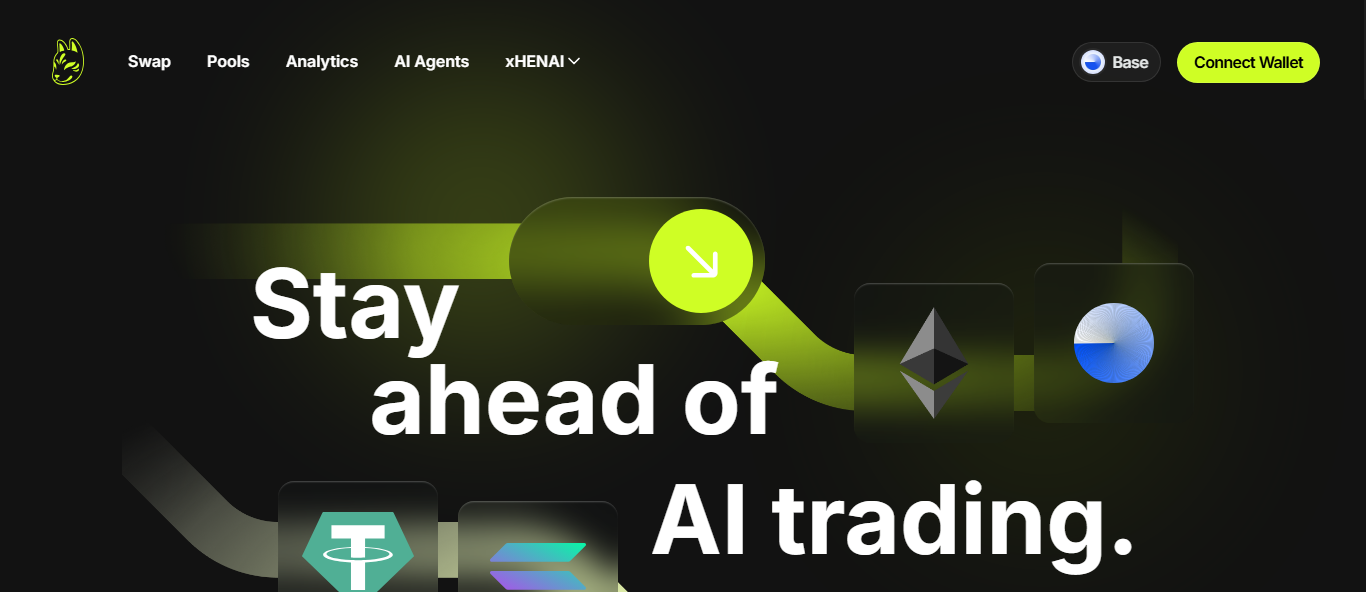Henjin DEX - Exchange Review

Henjin DEX is a modern, community-powered AMM built for the Taiko and Base ecosystems. It takes DeFi beyond standard swaps by offering concentrated liquidity, dynamic fee structures, AI agent tools, hooks, and a launchpad feature. It’s powerful - but built for users who build as much as they swap.
Community-first and highly customizable
Henjin was launched in 2024 as a native DEX for Taiko, later expanding to Base. It positions itself as a deeply flexible protocol, giving users and builders control over liquidity rules, fee tiers, and farm dynamics. Everything is driven by its DAO, creating a truly community-focused ecosystem.
V4 AMM core: hooks, dynamics, efficiency
This isn’t your run-of-the-mill AMM. Henjin V4 adds features like dynamic fees, concentrated liquidity, and external-contract hooks - letting DeFi developers overlay customized logic on swaps. It’s architected for capital efficiency and adaptability.
Launchpad, plugins and AI integration
HenjinAI extends the core DEX into an AI-powered realm. The ecosystem supports AI agent directories, trading and liquidity strategies, even a launchpad for new tokens - all tied to xHENAI and boost plugins. It’s new, experimental, and tightly woven into the DEX model.
Tokenomics and farming
There’s HENAI - Henjin’s native token - and xHENAI for staking dividends or accessing features. Farming and launch incentives are designed to bootstrap platform activity and reward early participants. The emission plan is fair, transparent, and tied to protocol usage.
Liquidity and current volume
Henjin handled modest TVL - approximately 65,000 dollars at peak and 11,000 recently - across a dozen pools, with about 1.4 million in monthly trading volume. That’s tiny compared to mainstream DEXs but fits its builder-niche orientation.
Security and transparency
The DEX is open-source and audited. Its capital-efficient AMM engine is built to be composable via smart contracts. Community governance handles proposals on pools, fees, and tokenomics. That makes it trustable for advanced users - but opaque for casual ones.
UX: slick but technical
The UI is minimal and responsive - ideal for developers or experienced DeFi operators. You connect a Taiko or Base wallet, set up liquidity pools with hooks, or launch a token. But novices - facing gas settings, liquidity ratios, fee parameters, and AI integrations - may feel lost.
Pros and cons
Pros
- Deeply customizable V4 AMM with hooks and dynamic fees
- AI-agent and launchpad tools via HenjinAI
- Community-run DAO and token-driven governance
- Concentrated liquidity enables capital efficiency
- Open source with focused ecosystem rollouts
Cons
- Extremely low volume and TVL for most pools
- Very technical - few hand-holding features
- Limited to Taiko and Base users
- AI tools and hooks experimental and developer-heavy
- Likely slow UI iteration and gating for newcomers
Who it fits - and who it doesn’t
Tailored for:
- Builders and DeFi developers on Taiko or Base
- Protocol teams launching liquidity and token models
- Power users wanting variable fees and smart hooks
- Early adopters wanting AI-powered DeFi tools
Not for:
- Retail users seeking simplicity and fiat on-ramps
- Traders seeking liquidity or frequent swaps
- Anyone uncomfortable with dynamic AMM logic
- Users requiring frictionless, beginner-friendly experience
Final verdict
Henjin DEX stands out as an advanced toolkit inside a DEX - designed by builders, for builders. With V4 hooks, dynamic AMM features, AI integrations, and a launchpad, it’s a playground for protocol experimentation. But it stays niche, small in scale, and richly technical.
If you're a DeFi operator or early-stage project on Taiko or Base and crave composable, flexible infrastructure - you’ll feel at home. For everyone else, Henjin may feel like a rocket with no fuel tank - powerful, but not ready for launch yet.
Disclaimer
“This content is for informational purposes only and does not constitute financial advice. Please do your own research before investing.”
.png)







%203.svg)
%203.svg)




















